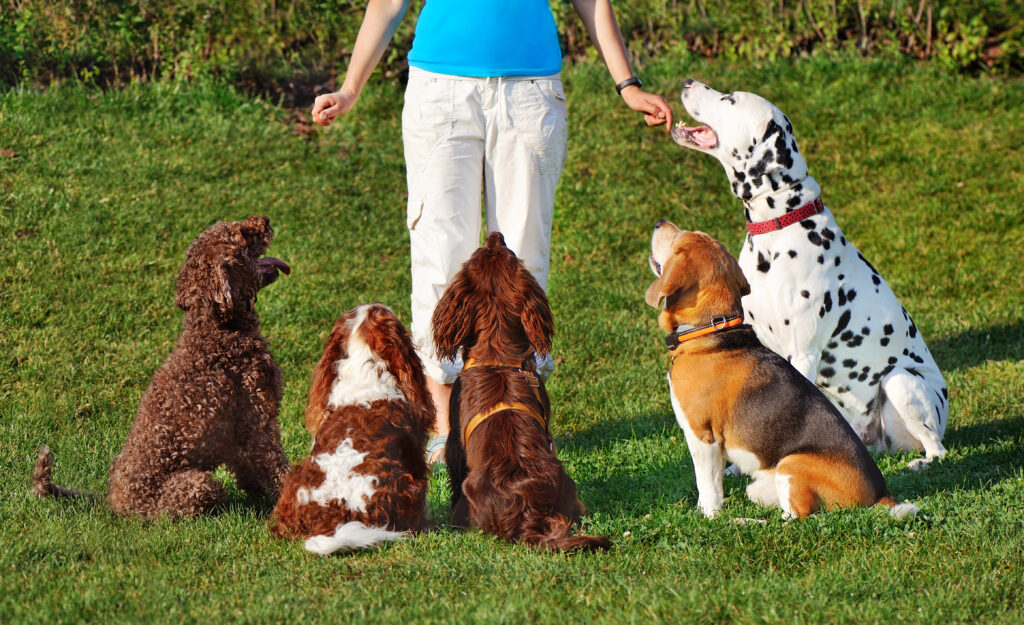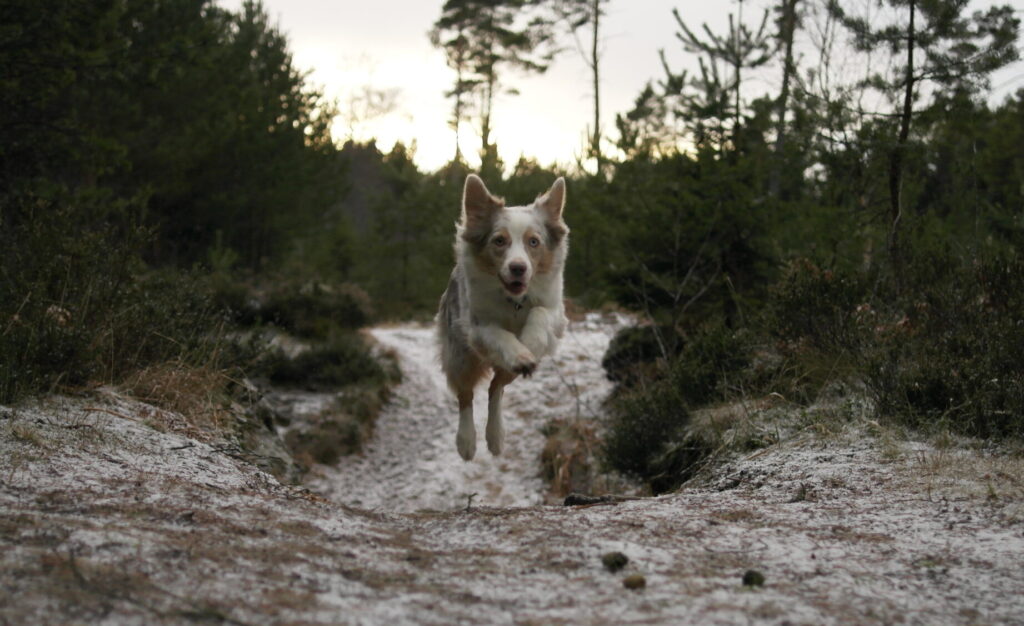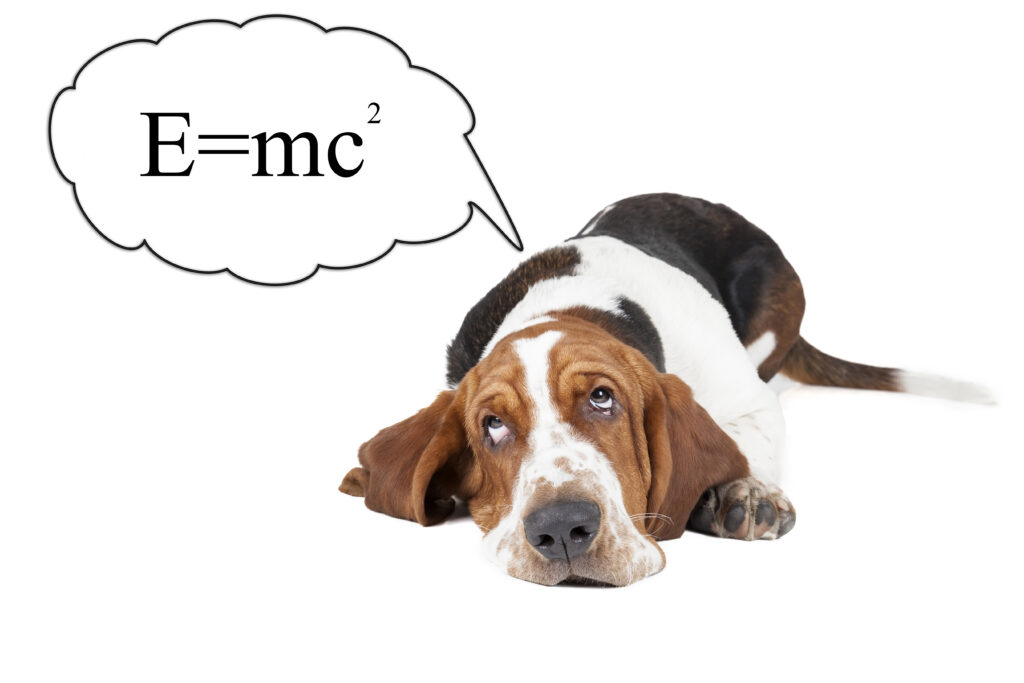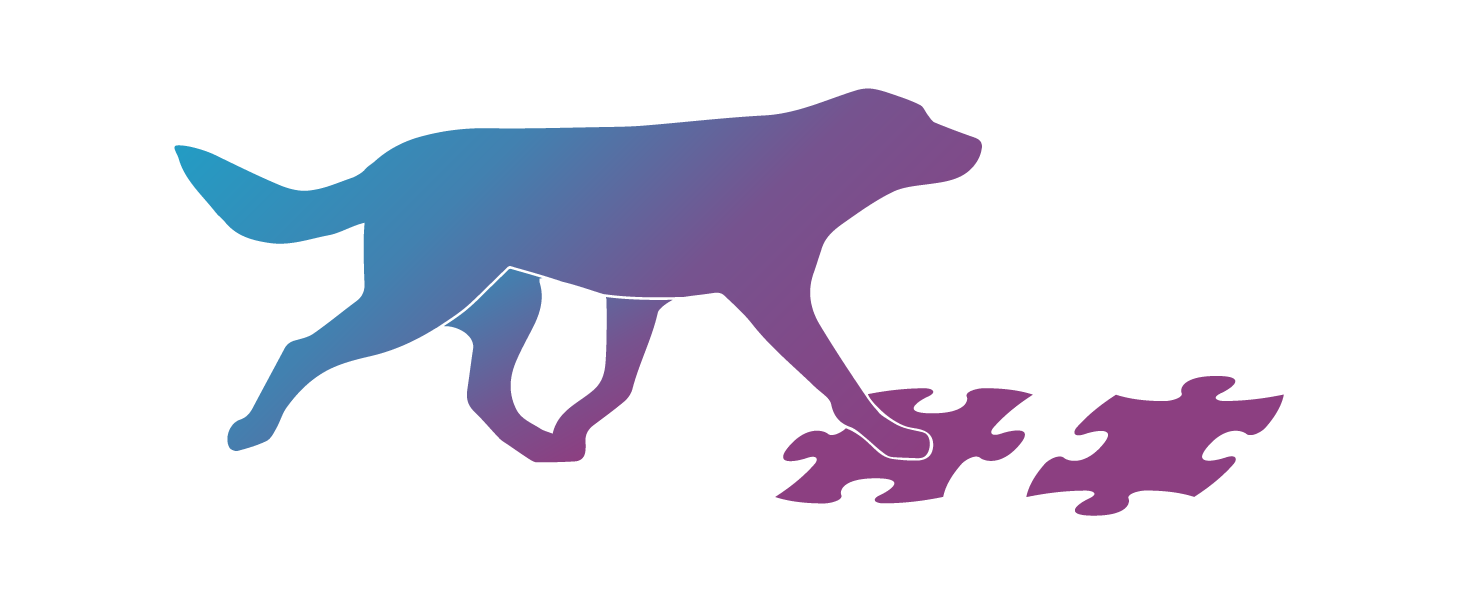Everything our dogs do requires coordination. Whether they are staying still or moving, they have to know where all of their different body parts are and how they move with respect to the environment around them and the other body parts. In order to succeed in sports, the learner must have excellent body awareness and coordination skills to navigate the challenges offered by sports exercises. Yet, coordination skills are something that we rarely think about when training our dogs. Even when we do, there seems to be a very limited set of exercises we can do!
One of the main limitations is that coordination skills are very difficult to train. With humans it’s a lot easier. We can tell another human being what body parts to move, how and where to move them, what parts of the body to keep still. We can also tell another human being what to pay attention to while moving. Whether to focus on the hip or the ankle. Or make sure to keep the pelvis tucked in and spine flat against the ground.

With dogs we don’t have these verbal training tools. And that makes it really challenging to work on canine coordination skills.
In order to help our dogs to become better coordinated and fluent movers, we – the handlers – must often improve the way we train. We have to learn to setup exercises so that we get the desired movement outcome. We have to become precise with our marking and reinforcement delivery. And on top of that we have to know the learning theories and training concepts to be able to explain the exercises to our learners. It’s as if we, the handlers, must work on our coordination skills first and only then ask coordination work from our dogs!
Understandably, it may actually seem easier to just let your dog figure out things on his own while doing the sports exercises. However, doing coordination work with your dog has actually quite a few BIG benefits that make it all worthwhile.
Coordination as the team manager for your dog’s body
Coordination is like a team manager between the brain, the nervous system and the muscles. Coordination makes sure different systems linked to movement and body control are functioning as a team and providing timely and accurate information for other systems. Coordination also makes sure this information gets delivered to all the systems involved in the movement.
Good coordination skills make sure this information travels FAST, is ACCURATE and has all the DETAILS needed. Poor coordination skills, on the other hand, mean that the information movement is slow and may be missing some crucial information the body needs.
The speed of information travelling is especially crucial in unexpected situations. Situations where your dog slips, trips or is otherwise exposed to a completely unexpected movement. Having good coordination means that your dog’s body is quickly able to recover, thus reducing the risk of injuries. And that should be one of the main goals for everything we do!

More efficient sports training
Coordination training is all about making the body function more efficiently. Making movements smooth and fluent. And also less taxing on the body. Coordination training also teaches the learner how his or her different body parts move. What are the options and what are the limitations. Knowing this actually makes sports training a lot easier!
If your dog already knows his own capabilities, it will be a lot easier for him to understand the sports exercises. When training a new element for your sport, your dog will have to figure out what it is that you’re asking him to do, how to do it AND how to move the body to do the exercise. Except… when your dog has learnt the body movement skills through coordination work, he will already know how to move his body to do the task!
That means he can focus on learning the new exercise without having to multitask between learning a new skill AND training his body to do that skill. As a result you’ll need less repetitions of the same exercise and can move on faster in your training!
Better emotional control?
Developing coordination skills is linked to the brain area called cerebellum. The area in the brain often linked to motor control, posture and coordination. And also it is thought to be linked to processing emotions like fear and pleasure.
This is hypothetical wondering, but could it be that working on coordination skills helps our dogs to cope better in stressful and difficult situations? Like the Thundershirt helps fearful dogs to be more comfortable through touch sensory feedback. Could it be that by helping our dogs feel more comfortable in their bodies helps them to be more confident in new or strange situations?
I think so. Based on what I’ve seen in my own dogs and my clients’ dogs, working on body awareness and control helps them stay calmer in otherwise scary or super exiting situations. It’s as if the dogs become happier and more confident about who they are without worrying about the world so much!
Faster learning
We are not done with the cerebellum just yet! This area of the brain is also engaged in the process of making logical connections. In human training world and child development articles it’s often said, jokingly, that doing coordination exercises makes you smarter! This “smartness” comes from the improved ability to create logical connections faster thanks to coordination training. In our dogs that means that they will be able to learn new skills and cues faster and with less repetitions. Now, who wouldn’t want that?

Longer lifespan?
As a final bonus, a huge one, is what one of my students said. She is a human physiotherapist and in one of my courses she mentioned that humans who do intricate work with their hands – like playing an instrument – tend to have a longer lifespan. And intricate work with hands is nothing else than a fine motor control and coordination exercise! Doing fine motor control and coordination exercises help to keep the brain more active. And who knows, maybe doing coordination work with your dog will actually help to extend his lifespan? I personally think it’s worth giving it a try 😉
Coordination training really seems like an essential vitamin for the body, making sure different body systems are all working smoothly together, improving muscle reaction speed, reducing the risk of injuries and helping your dog learn faster and with fewer repetitions. On top of that, coordination exercises may also help your dog feel more at ease in new, stressful situations and live a higher quality life for longer.
If you enjoyed this blog post, share it with your friends using the buttons below
Or leave me a comment, letting me know you’re here! It’s a huge +R for me 🙂
Thank you!
Happy training!
Mari & Co.
Mari Valgma, CPCFT
